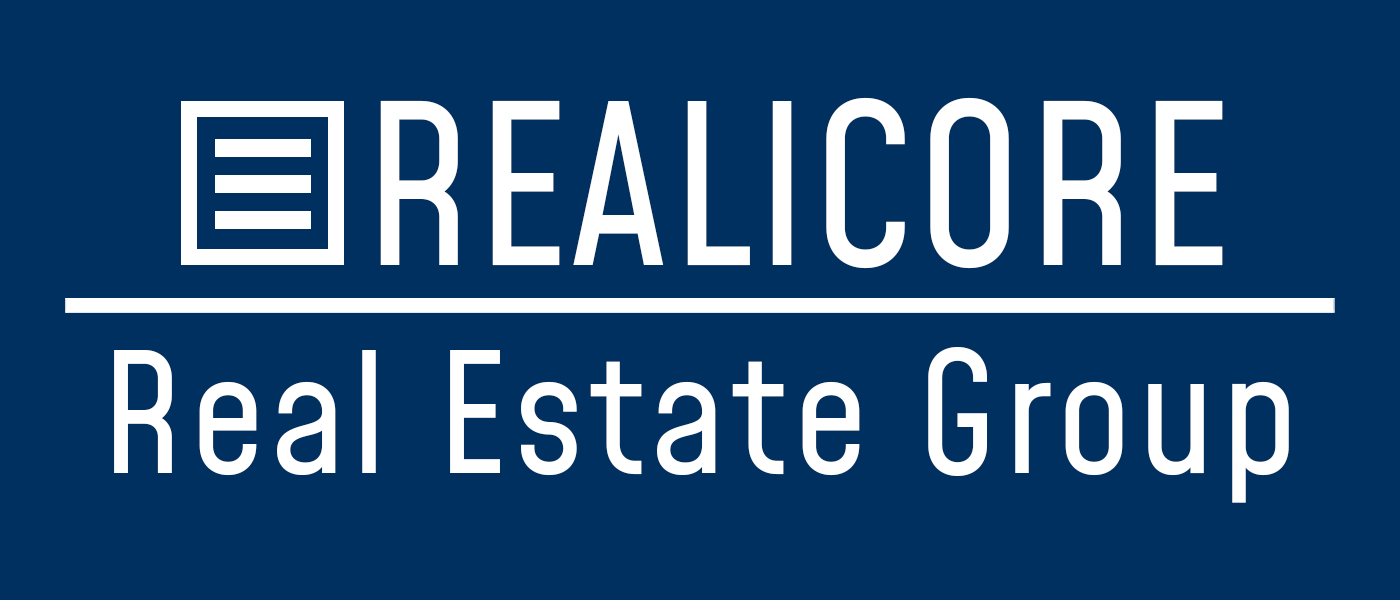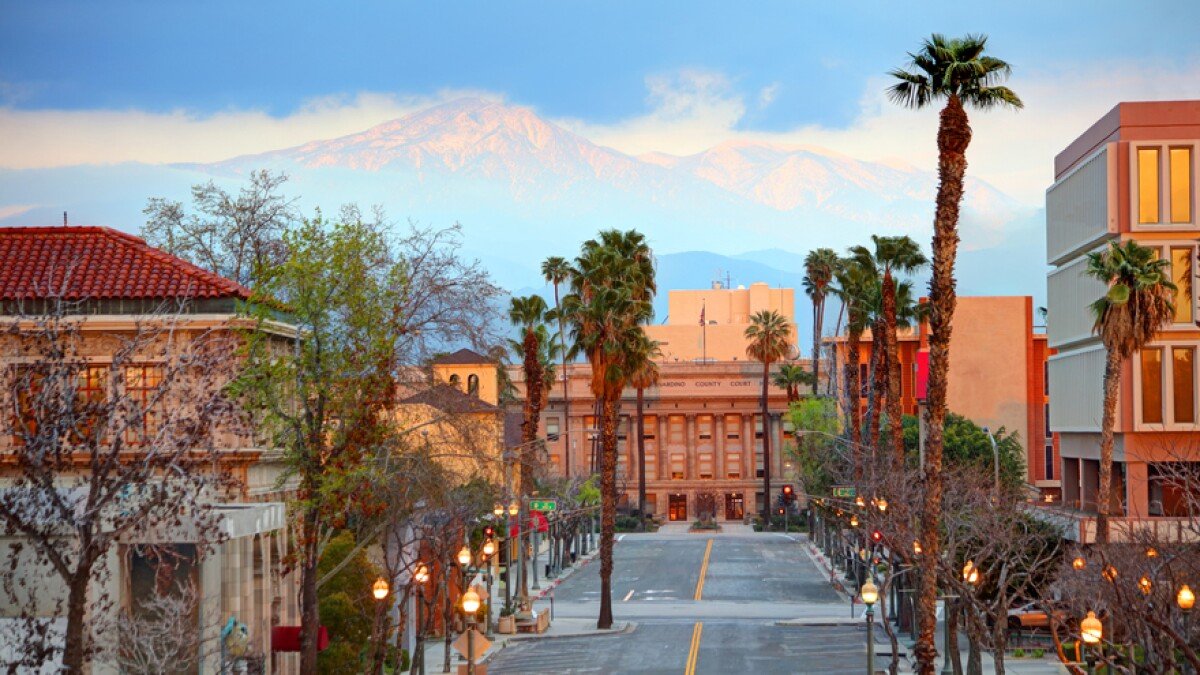It All Started With a 2,400-Square-Foot Retail Property in Downtown San Bernardino
David Friedman, CEO of RealicoreRealEstate based in San Bernardino, California, doesn’t look like your typical real estate investor — or at least not the version that you’d see in a movie. With his full beard, long hair and casual clothing, he more closely resembles an artist or perhaps a programmer.
But then, Friedman doesn’t consider himself a typical real estate investor either. He refers to himself as a “community real estate developer,” with an emphasis on community.
And then there’s the fact that if it weren’t for an unfortunate situation when he was a teenager, Friedman might never have gotten into the real estate business at all.
“I got in a little trouble with the law, and my dad literally said, ‘Why don't you do something useful with your life?’” Friedman told LoopNet.
That stern lecture sent Friedman, who at the time was an aspiring DJ, down a very different path. By 18, he had obtained his residential salesperson license. After a disappointing introduction to the business at Century 21 — “I hated it because I was the youngest guy there; I was basically their IT guy” — Friedman turned to his father once again.
He realized that his father, who had run his own accounting firm in downtown San Bernardino for 35 years, had, as part of his continuing education for his CPA (certified public accountant) license, obtained his real estate broker’s license. Friedman suggested to his father that instead of unjamming the printer at Century 21, he come to work under his umbrella. His father agreed, and in his first year there, Friedman sold 17 homes.
“And I was like, ‘Oh s***. I'm actually kind of good at this,’” Friedman recalled.
Frustrated by the lack of his vision he often observed in his clients (“I had clients who would go to a house, and the carpet would be dirty, and they'd pass on it,” Friedman said) he decided to start purchasing homes with potential and flipping them. Eventually, his flipping business became so successful that Friedman was flipping about 100 houses per year.
That volume, though, became “logistically impossible” according to Friedman. Around the same time, a certain cable network began to make house flipping seem both cool and easy, which meant the margins were dwindling. This combination of factors left Friedman looking for his next move.
And that’s when, in the spring of 2016, he spied a 2,400-square-foot retail property located at 426 West Court Street in downtown San Bernardino. But we’ll get back to that in a moment; first, a necessary interlude.
San Bernardino: A Very Abbreviated History
Before we get to the next part of our story, it’s important to have some context about San Bernardino.
A once thriving California city, San Bernardino, and its downtown in particular, was decimated by the closure of the Norton Air Force Base in 1994. According to Friedman, this led to significant disinvestment in the city, much of it by individuals that didn’t live in or anywhere near it, Friedman said.
To illustrate this scenario, Friedman relayed a story about the second commercial property he ever bought which at the time was vacant and routinely being trespassed by unhoused individuals. The building’s out-of-state owner laughed when Friedman finally tracked him down.
“Oh, I forgot I had that property,” he told Friedman.
In Friedman’s words, many of these investors “just didn’t care anymore” about San Bernardino. But Friedman did.
While he hadn’t grown up in downtown San Bernardino, Friedman had spent much of his youth at his father’s accounting office there. He had watched as San Bernardino’s downtown storefronts became increasingly vacant. Then later, he witnessed a new cohort moving into the area: artists and creatives who were attracted to the city’s relative affordability.
This burgeoning community of San Bernardino residents “wanted something good for themselves,” Friedman said. They were charmed by the history of the city, and they believed in its potential to reinvent itself.
Fortunately, Friedman did too.
A Property with Potential
Now, back to that 2,400-square-foot retail property. Despite the “for sale” sign hanging over it, even an intrepid investor could be forgiven for passing it by without much consideration. Firstly, it was vacant; moreover, the whole block was virtually vacant, with only two operating businesses residing upon it — a paintball shop and an attorney’s office.
The first piece in a burgeoning real estate empire. (Courtesy of David Friedman)
Constructed in 1950, the property had most recently been a sandwich shop, but any useful infrastructure from its prior tenant had vanished. As Friedman put it, “everything had been ripped out;” there wasn’t even an AC unit on the roof — and that roof needed some repair work.
Nonetheless, “it had good bones,” according to Friedman, and he saw the potential in it. He knew that approximately 25,000 government employees commuted downtown for work Monday through Friday. And Friedman claimed that at the time he purchased the property, there was only a single restaurant in the neighborhood for them to patronize.
Working with his father once again, Friedman put together a small group of investors. Given the property’s vacant status and San Bernardino’s reputation, conventional lenders “shriveled up, basically,” at the prospect of financing a purchase in the city. That meant traditional financing was out of the question.
Instead, Friedman and his investors sought out a “hard money” loan from a private financier. They ultimately purchased the property for $250,000 in July 2016 with a 30% down payment and a hard money loan charging a 10% interest rate.
Friedman then spent approximately $30,000 cleaning up the property — repairing the roof, replacing broken windows, installing air conditioning and turning it into a “vanilla shell,” which is commercial real estate terminology for what is essentially a clean but empty white box.
Friedman had his first commercial real estate property. Now, he just needed a tenant to occupy it.
Bringing Some Heat to San Bernardino
Friedman knew that he wanted a restaurant for the property, but attracting a restauranteur to downtown San Bernardino wasn’t an easy task.
“When people hear San Bernardino, they won't even take the chance to see it sometimes,” Friedman said.
In this instance, just advertising the space or working through a local broker probably wasn’t going to be sufficient. If Friedman was going to find a tenant that was willing to consider expanding into San Bernardino, it would require more of a personal touch.
“Some of my business partners said, ‘Hey, we know a guy in Los Angeles. Let's all go to his restaurant and try out his food,” Friedman recalled.
So, Friedman and his partners undertook the 90-minute journey to Los Angeles — a place that, in some ways, can seem as far from San Bernardino as the moon does from Earth. There, they found themselves patronizing Gringos (recently renamed Fire) a purveyor of hot wings, mariscos (a Mexican seafood dish) and ribs — a unique combination, to be sure, but one that Friedman found appealing. He also discovered that he was quickly able to establish a rapport with the restauranter.
By the end of that initial meeting, Gringos’ owner told Friedman, “I have one location in Los Angeles; I have one in Barstow; and I'll open in San Bernardino — if you guys get my back.”
By November 2016, the space was rented, and the tenant has remained in place ever since. “It's been a good business partnership,” Friedman said about their owner-tenant relationship. “But, yeah, it took us going out and personally talking to restaurateurs to make it happen.”
Friedman arranged for a NNN lease with regular escalations. Other than agreeing to pay $5,000 during recent renewal negotiations to install a second air conditioning unit, Friedman hasn’t paid for any improvements to the property since his initial investment. Meanwhile, he has a satisfied tenant that regularly pays approximately $3,000 a month in rent.
Based on a 6% capitalization rate, Friedman estimates that the property is currently worth approximately $600,000, more than double what he paid for it seven years ago.
A Burgeoning California King
Since acquiring that first property, Friedman, his father and their partners have purchased another 14 commercial properties, totaling approximately 90,000 square feet. Most of those properties are retail assets, with some offices rounding out the portfolio; and all but two of them are in downtown San Bernardino.
A father and son real estate dynamic duo. (Courtesy of David Friedman)
“No investors wanted to compete with us,” Friedman said. “So, we just kept going after [properties] — every single piece that we could pick up.”
Today, Friedman is presiding over a bit of a renaissance in downtown San Bernardino. His tenants include multiple art galleries, a yoga studio and a gym. A brewery on the way will share a space with the gym. (“You'd be surprised at the Venn diagram of people that work out and also drink a lot of beer,” Friedman said.) And there’s also a nascent chain of boba shops, Viva La Boba, that are owned and run by Friedman, ever the entrepreneur, and his girlfriend.
Those hard money loans are a relic of the past. These days, Friedman has a flourishing affiliation with Arrowhead Credit Union, a regional bank that was once headquartered in downtown San Bernardino. Once again, Friedman credits some personal engagement, bolstered by strong financials, with making that relationship work. It’s also due to a shared affection for San Bernardino. “They saw its decline,” Friedman said. “And they wanted to be part of why it came back.”
San Bernardino also recently secured some funds from the America Rescue Plan Act, a plan by the American government to provide economic relief to American workers in the wake of COVID-19, and Friedman said that the city solicited his advice about how they should be allocated. He said there are plans to clean up some of the city’s parks and invest in its infrastructure.
Further contributing to San Bernardino’s revitalization is the planned redevelopment of the Carousel Mall, a more than 40-acre site which is set to become 13,000 new residential units “across the street from all my buildings,” Friedman said.
When asked about what advice he’d give to an incipient investor, Friedman kept it simple. Rather than flocking to the same overheated markets as every other entrepreneur, he said “invest in cities that need the investment.”
And, perhaps, consider doing so alongside your dad.
“He's my hero,” Friedman said. “We've had our disagreements as far as management style and all that. But it’s a blessing to be able to work with him.”
DANIEL SCHMERGELMANAGING EDITOR
Daniel Schmergel is the Managing Editor of LoopNet. He has worked in the commercial real estate industry for more than 15 years, serving in a variety of marketing, content and communications roles for companies that include Newmark Knight Frank and Cushman & Wakefield. He has also previously held positions as an adjunct professor, music critic and editor-in-chief of an online arts and culture publication.


